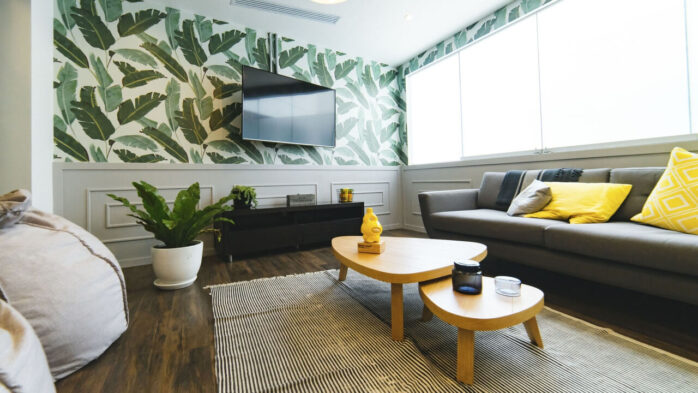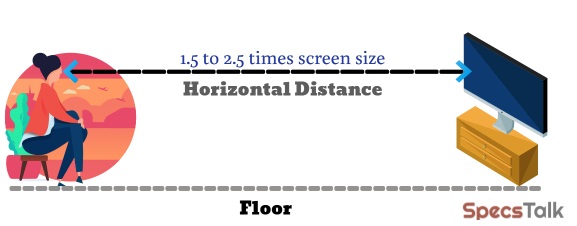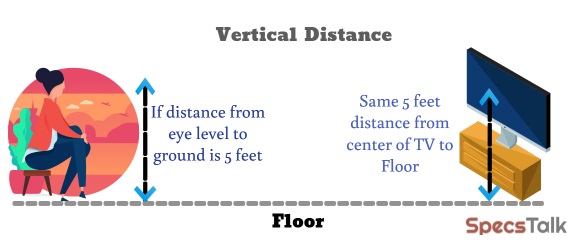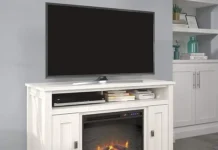
Buying a new TV is a hard job, considering that it takes days to decide which TV you’re ready to go with. Before actually buying a TV, there are various factors that should be taken into consideration, like the size, price, performance, and various other factors. And finally when you buy your perfect TV and bring that home, then a lot of other questions hits you. Like where you should mount the TV, on a table or on the wall. And if it does go on the wall, then how high should it be mounted. Well, all these questions revolve around one factor, which is the best viewing angle for TV.
To be able to select the right spot, you should know that what could be the best viewing angle for the TV you just bought. And that depends on a lot of factors, like the size of your room, or the position of the couch. So you must be thinking of how hard it is to decide. But don’t worry because that is what we’re here for, to make it easy for you to decide the sweet spot for your TV. So without any further ado, let’s get this thing started.
Best Viewing Angle For TV
If the mounting position of the TV is not right, then it doesn’t matter how good picture quality the television is offering, the viewing experience of the TV will definitely be impacted. And there are basically three factors that should be kept in mind while mounting the TV either in the living room, bedroom, or some other place.
1. Horizontal Distance Between The Viewer And The TV
Deciding the horizontal distance between you and the TV is really confusing. And most people don’t realize how important it is. Like sitting too close to the TV will let you see the pixels or the tiny dots on the screen, which you really don’t want to see. But it isn’t that simple and straightforward. Basically, the right distance depends on 2 things: The size of the TV and the resolution of the TV.
Size of the TV
The first and the most important thing to consider is the size of your TV. The larger TV sizes are attracting more people nowadays, and rightfully so. You can get a more detailed viewing experience if you place a large TV in your room. But a TV size which is too large for your room will ruin your viewing experience as you’ll not be able to maintain the right distance from the TV. Now, we obviously can’t tell how big your room is, but what we can surely guide you on is how you can calculate the appropriate distance that you should maintain from the TV.

So, the horizontal distance between you and the TV should be 1.5 to 2.5 times the screen size (measured diagonally). Let’s say you have a TV with a screen size of 50″ which you are about to mount on the wall. So in that case, you should be sitting about 6 to 10 feet away from the TV.
Resolution of the TV
The maximum resolution of the TV plays a huge role in deciding the right distance from the TV. For instance, if your TV has a maximum resolution of 1080p, then sitting too close to the TV can expose pixels and linings on your TV screen, thus ruining your viewing experience. So for example, with this resolution and a screen size of 50″, you should be maintaining that same distance of 6 to 10 feet from your TV as we’ve discussed above.
On the other hand, if the maximum offered resolution on your TV is 4K or 8K, then your viewing experience won’t be impacted even if you sit close to the TV. Because the size of the pixels is really small when it comes to ultra HD TVs. So you’re okay sitting at a distance of 4-7 feet from your 4K TV having a screen size of 50″.
2. Height Of The TV From Floor
After buying a TV, either we mount the TV on the wall or place it on the TV stand. However, while mounting the TV on the wall or on the stand, one should consider the height at which the TV should be placed. And the height of the TV is considered on one factor:
Your Eye-Level
For the best viewing experience, the height of the TV from the floor should always be on your “eye level.” And why is that? Well, first and foremost, if you place your TV in a position that is above your eye level, then you’ll have to constantly keep your head upward to look at the center part of the TV screen. And secondly, the center of the TV screen is the part where picture quality works at its best.
What to do?
Now, before mounting the TV on the wall, the very first thing you should do is sit on your couch and ask someone to measure the height between your eyes and the floor. Now, mark that height on your wall with a pencil, because that is where the center screen of your TV should be.

However, if you have no other choice but to mount the TV a little higher than your eye level, then you should use the type of mounting that’ll tilt the TV a little bit downwards. That way, you’ll not suffer from a stiff neck because of looking at the TV with an upward cocked head.
3. Does Type(LED/OLED) Of TV Screen Also Impacts Viewing Experience?
This is something that should be considered before buying a television, so if you are still looking for a television, then luck’s on your side. However, don’t be disappointed if you’ve already bought the television because you can still follow everything mentioned in the article to get the most out of your TV. Now, there are different types of TV screens, and currently, OLED and LED-LCD screens are used. And they both give different viewing experiences in terms of viewing angles.
LED/LCD
The LCD/LED TV screens generally lack in terms of viewing angle. And that is because the LCD/LED layer doesn’t transmit light of its own. Instead, these type of screens uses the light generated by the back of the TV. This means that when you move away from the center of the TV, everything from deeper black levels to colors starts getting affected. So if you’re using a LED/LCD TV, then it’s best that you place the TV at 0 degrees which means right in front of your eye level.
OLED
When you watch the screen from the sides, then shifting colors or a poor deeper black level isn’t much of a concern with OLED TVs. And that is because unlike with LCD/LED TVs, each and every OLED panel give out its own light. So it’s safe to say that these kinds of televisions can work best even when they are placed at a slightly higher angle than 0 degrees.
Wrapping Up
Basically, there are 2 things that should be kept in mind while mounting the TV to get the best viewing experience. The first is, that the TV should be placed directly at the eye level. And the second is that the TV should be at an appropriate distance from the viewing position. But the most important factor to consider is your personal experience. So while following our guide, it’s better that your test the position of the TV personally before having it placed in that position.













